Information That Will Save Your Family
It’s overwhelming, isn’t it? You want to prepare yourself and your family with the right tools and products to get through disaster or disruption, but, what do you really need? The online lists are so long; do you really have to buy all of it? And once you have your tools, do you know how to use them? Do you know how to store your supplies so that they will last and be ready when you need them?
Back40 grew out of our personal need for disaster preparedness. Living in California is a bit like living on a time bomb…. you never know when the ground will give way beneath you. The government says help should arrive within 72 hours, but the truth is, we’ve all seen firsthand that you could be on your own, without power, food, water or medical help for much longer.
Until help arrives, if it ever does, you will have to take care of yourself. We want to give you the information and tools that will see you through this time. There will be simple tutorials on survival basics such as starting a fire or purifying water, and more in depth lessons on growing and storing your own food. As often as possible we will give you “how-to” instructional videos, so you can see what the project is meant to look like. And we will provide you with lists, broken down to basics for your home, car and emergency safe place.
Whether you are looking for information on how to keep safe for short term emergencies or long term social breakdown, our goal is to teach you how to keep yourself and your families safe from harm.
Prepper Information
Growing Your Own Fruit Trees
Fruit Trees Need to Be Grafted
 Lately I’ve been seeing a lot of online articles on Prepper and Homesteading sites about growing Avocado trees from their pit, and apple trees from their seeds. While you can grow a plant from the seed, chances are, it will never be more than an ornamental. If you need a tree that produces actual, delicious, true-to-type fruit, that will feed your family; you have to have a tree that has been grafted.
Lately I’ve been seeing a lot of online articles on Prepper and Homesteading sites about growing Avocado trees from their pit, and apple trees from their seeds. While you can grow a plant from the seed, chances are, it will never be more than an ornamental. If you need a tree that produces actual, delicious, true-to-type fruit, that will feed your family; you have to have a tree that has been grafted.
Remember Johnny Appleseed? He went across America planting Apple trees. Sadly, very few of those trees produced apples that anyone would want to eat. They were mostly used for cider. Occasionally, a tree would bear fruit that actually tasted good. Farmers and Nurserymen learned to take cuttings from these trees, and graft them so they would reproduce true to form. In this way they could propagate a new tree to take on the best characteristics of the delicious fruit.
Grafting is a method of combining a strong rootstock with a part of a tree that has qualities that you want. Let me explain. The varieties of apples, citrus, peaches, avocados and plums that we enjoy in the store and farmer’s market don’t grow from seeds. Nurserymen take cuttings from trees that they want to reproduce, and splice or graft them to the base of trees that have qualities they need. The rootstock gives pest resistance or size to the tree, and the cuttings or scions give the fruit their flavor. In fact, the mother tree of the California Citrus Industry, the Washington Navel Orange, is alive in Riverside, CA. Two mutant Selecta Orange trees from Brazil were grafted together to create this delicious seedless wonder.
There are a number of types of grafts, like the tongue graft, bud graft and the cleft graft. Each has a different technique, but the basic idea is to match sizes of the root and scion, then cut them both on the bias and match them together, and then cover the cut with wax or tar and an elastic wrap. Learning how to graft is a skill, much like cooking, orienteering, knitting or building a fence. You need to practice to get the technique right. It’s a good idea to take a class, or watch a few of videos to see how to do it.
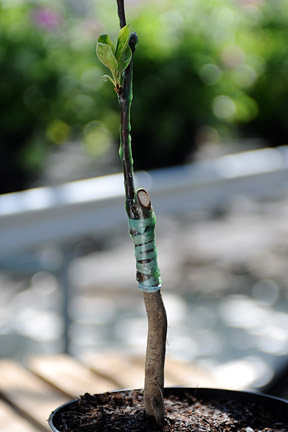 Benefits of Grafting-
Benefits of Grafting-
Why not just let the tree grow naturally? After all, it should produce fruit eventually.
-A huge benefit of grafting is that it shortens the time it takes for the tree to produce fruit. A tree left on its own could take 7 to 10 years to bear fruit. A grafted tree cuts that down to 2.
-With fruit like apples, the fruit could taste really sour or bland. If you are looking for an eating apple you may end up wasting years waiting for dud apples. And some trees won’t produce fruit at all.
-By grafting onto dwarf rootstock, you will end up with a tree that does not grow as tall, but still produces the same amount of fruit. Harvesting is easier and safer, and the tree takes up less space in the orchard.
-Choosing the right rootstock will enable you to customize the tree to the soil type. Also, pest and disease resistant rootstocks will pass their resistance to the grafted scion. This was important to the wine grapes in France. They were affected by a root disease, and the vines were dying off. Since the disease didn’t affect American grape rootstock, the vineyards could be saved.
-You can get creative with grafting, and create a tree that produces different varieties of fruit from one trunk. This is possible with different apple varieties, citrus and fruits like peaches and plums. They call these “fruit salad” trees.
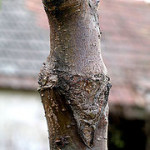 Planting a fruit tree is an investment in your future. Waiting until you need the fruit is too late. Whether you are a Prepper or a Homesteader, it is something to do right now. Buying a tree from a certified Nursery is your best bet. They will answer all of your questions, and give you tips on how to get the most from your fruit tree. Best of all, they will stand behind what they sell. Buying trees from a discount warehouse store is not a great idea. I know from experience that they sell seconds and the guy in charge of shoes on Tuesday is working in the garden center Thursday.
Planting a fruit tree is an investment in your future. Waiting until you need the fruit is too late. Whether you are a Prepper or a Homesteader, it is something to do right now. Buying a tree from a certified Nursery is your best bet. They will answer all of your questions, and give you tips on how to get the most from your fruit tree. Best of all, they will stand behind what they sell. Buying trees from a discount warehouse store is not a great idea. I know from experience that they sell seconds and the guy in charge of shoes on Tuesday is working in the garden center Thursday.
Then, take a class and learn to correctly graft plants and trees. Planting an Avocado seed is still fun, but instead of waiting for it to grow enough fruit to make a bowl of guacamole, consider it rootstock, and practice your new grafting skills on it. If the world experiences an emergency situation, or if you just want to go off-grid and disconnect, grafting is a valuable skill. And as long as people grow their own food, grafting is a skill will always be in demand for sale or barter.
Your Herbal Medicine Cabinet
 Chamomile–
Chamomile–
I love having Chamomile in my garden. This pretty sweet plant from the Daisy family, is covered with little white flowers all summer long. German Chamomile is an annual that forms a 3 foot bushy sort of plant, while Roman Chamomile is a perennial that grows low to the ground. My preference is for the German Chamomile over the Roman Chamomile, which can be bitter, but both can be used the same way.
Chamomile Uses-
Chamomile has been used for thousands of years as a go-to herb for a number of ailments. And its calming properties make it a must-have in crisis situations.
Chamomile flowers make a delicious tea that can treat-
-stomach pains, nausea
-insomnia
-a cranky baby
-anxiety
-mouth sores
-gum irritation
Chamomile flowers can also be used externally as a bath for:
-eye problems- something in the eye, or an eye irritation.
-slow healing sores
-exzema
-diaper rash
Chamomile even works in the garden works to discourage pests
-as a prevention against Cucumber Worm (plant chamomile and cucumber close together)
Growing Chamomile-
Chamomile is relatively easy to grow. Just sprinkle the seeds on top of the soil. Don’t cover them up! They need sunlight to sprout. You can start the seeds inside, and then transplant them out to the garden after the last frost to extend their lifespan.
Because Chamomile will grow in less than perfect soil, you don’t need to overfeed or over fertilize the soil. These hearty plants will put up with less than optimal conditions.
After the Chamomile plants come up, and are hardy enough for transplanting, you can plant the seedlings 12 – 18 inches apart. German Chamomile will grow to a 2-3 food bush covered with tiny chamomile flowers. It’s not fabulously decorative, but it is a nice little plant.
Because chamomile will bloom all summer, there is no set harvest time. You can harvest as you need them, or harvest to preserve all summer long. Harvest just the flowers; leave the stems they are of no medicinal use. I use scissors to make it a clean cut.
Dry the flowers by laying them on a cloth or towel in a warm well-ventilated area. Do NOT dry them directly in the sun! The sun will steal their volatile oils. Once the flowers have dried, store them in a jar, airtight, away from sunlight. They will keep potency for a year.
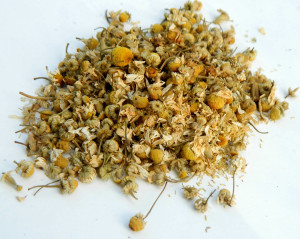 How to Prepare Your Chamomile-
How to Prepare Your Chamomile-
Make a tea- 1 tsp dried flowers or 2 tsp fresh flowers per cup of tea. I like to put them in a tea egg or reusable tea bag. You can just pour water over the flowers, and then strain them out.
Let the tea steep for 8 minutes covered.
Add honey for sweetness and extra nutritional and medicinal benefits.
Make a Bath or Soak-
For use on sores or skin conditions, you can bathe in a tub of Chamomile or make a strong tea and apply it topically with a soft clean cloth.
To relieve eye irritation, steep the chamomile to make a tea, soak a cloth into the warm tea, squeeze a bit, and then place on the eye. Repeat.
Basil
Basil is a must for every kitchen and medicinal garden. This annual is easy to grow in the garden, or in containers. This leafy herb is bright green and looks and wonderful as it smells. Basil does grow some pretty little flowers, go ahead and pinch those off for a bud vase. Your basil will come back even stronger.
Basil Uses
Basil is an amazing herb that most people just associate with pesto. While the bright green leaves are aromatic and lend a fresh flavor to many foods, Basil can also be used as a medicinal herb. Fresh Basil is loaded with Vitamin K, and also contains Vitamin A, manganese, iron and
folate.
Bleeding– Vitamin K is an essential nutrient because it encourages blood clotting, and prevents excessive bleeding.
Women’s tonic -Iron and Folate are essential nutrients for women, especially women who are pregnant.
Radiation Damage-Recent studies have shown that basil contains certain flavonoids that help our body at the cellular level by protecting white blood cells from radiation and oxygen damage.
Antibacterial– Studies show that basil can inhibit the growth of certain bacteria that are to anti-biotic resistant.
Heart Health– Vitamin A helps oxidize cholesterol that builds up on the walls of blood vessels.
Wasp Stings– One drop of basil essential oil on a sting should ease the pain.
Growing Basil-
Basil is a great plant for beginning gardeners since it’s not too fussy about soil conditions. This annual can even thrive indoors in a window garden. I prefer starting my basil in growing containers, and then transfer them outside when they are strong enough. Be sure to cover the basil seeds with ¼ inch of fine soil or compost. Keep them damp. When you are ready to plant Basil outside, wait until after the last frost. Set the basil in soil that drains reasonably well (it won’t like clay). And your plant should get at least 6 hours of sunlight a day. Water basil when the soil is dry (some say every 4 days). It does like damp, but it doesn’t want to sit in a puddle. Basil likes the heat. Thin the plants to 10 inches apart, they do spread out a bit if they have the space.
Harvest basil by plucking leaves as needed. Cutting out a load of leaves to make a pesto or essential oil will encourage stronger growth. If your basil develops flowers, pluck them off. Basil flowers will slow their growth, and begin the end of the lifecycle. (You can eat the flowers, and they are pretty on a salad… they just aren’t as delicious as a basil leaf). Leaves can be harvested all season. Basil can be eaten fresh, dried, frozen, or as an oil.
Because it is an annual, your basil will die off at the end of the season.
How to prepare basil-
As a food, basil is astonishingly versatile. You can eat it fresh, use it as a dried herb or create flavored oil.
-tear up fresh basil leaves to add to any salad
-add fresh basil to sandwiches or pizza
-make a pesto sauce for pasta (combine fresh leaves, olive oil, garlic and pine nuts in a food processor)
-steep in olive oil to make a flavored oil for salad dressings
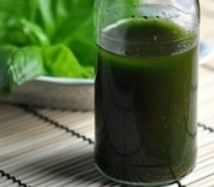 As a medicine, basil is best administered as an essential oil.
As a medicine, basil is best administered as an essential oil.
-Crush a handful of basil leaves and stems to release their oils. Place into a clean jar, then fill with mild vegetable oil. Make sure the basil is completely covered. Seal the jar, and place somewhere warm, but not in sunlight. After a week, strain out the leaves but SAVE THE OIL! Put another handful of crushed basil into the jar, pour the oil back in, and let go another week. Continue to add and strain basil to that oil for a few weeks, until it is really strong. The essential oil will be good for 6 months if kept in a sealed bottle out of the sun.

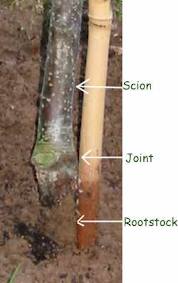
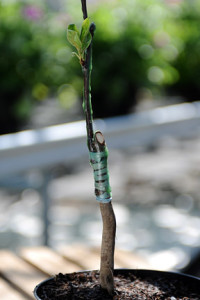










12 pings
Skip to comment form
[…] Information […]
[…] Prepper Information […]
[…] Prepper Information […]
[…] Prepper Information […]
[…] Prepper Information […]
[…] Prepper Information […]
[…] Prepper Information […]
[…] Prepper Information […]
[…] Prepper Information […]
[…] Prepper Information […]
[…] Prepper Information […]
[…] Prepper Information […]